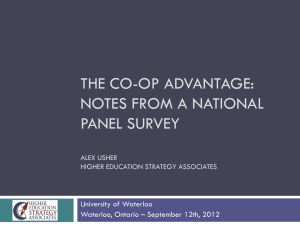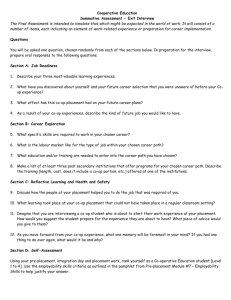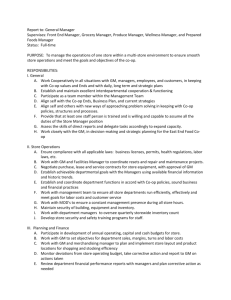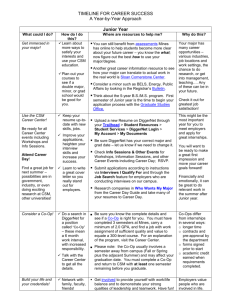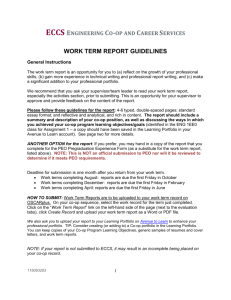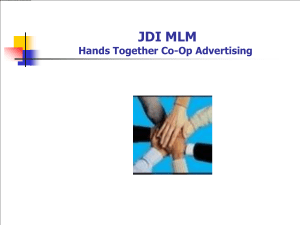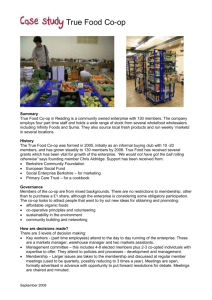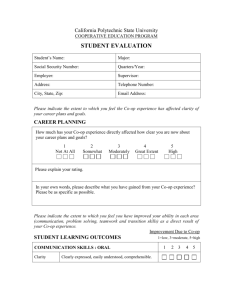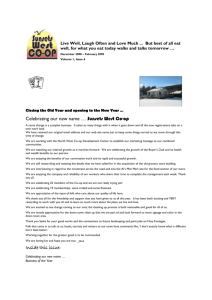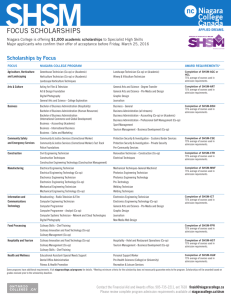Business Plan Thoughts
advertisement
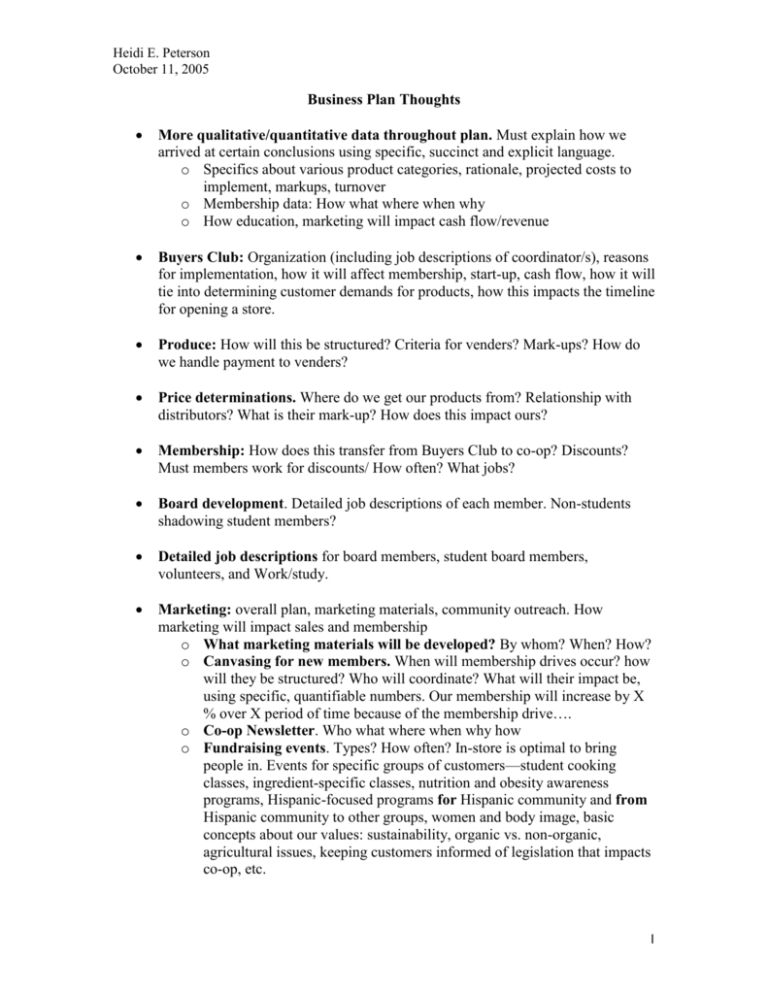
Heidi E. Peterson October 11, 2005 Business Plan Thoughts More qualitative/quantitative data throughout plan. Must explain how we arrived at certain conclusions using specific, succinct and explicit language. o Specifics about various product categories, rationale, projected costs to implement, markups, turnover o Membership data: How what where when why o How education, marketing will impact cash flow/revenue Buyers Club: Organization (including job descriptions of coordinator/s), reasons for implementation, how it will affect membership, start-up, cash flow, how it will tie into determining customer demands for products, how this impacts the timeline for opening a store. Produce: How will this be structured? Criteria for venders? Mark-ups? How do we handle payment to venders? Price determinations. Where do we get our products from? Relationship with distributors? What is their mark-up? How does this impact ours? Membership: How does this transfer from Buyers Club to co-op? Discounts? Must members work for discounts/ How often? What jobs? Board development. Detailed job descriptions of each member. Non-students shadowing student members? Detailed job descriptions for board members, student board members, volunteers, and Work/study. Marketing: overall plan, marketing materials, community outreach. How marketing will impact sales and membership o What marketing materials will be developed? By whom? When? How? o Canvasing for new members. When will membership drives occur? how will they be structured? Who will coordinate? What will their impact be, using specific, quantifiable numbers. Our membership will increase by X % over X period of time because of the membership drive…. o Co-op Newsletter. Who what where when why how o Fundraising events. Types? How often? In-store is optimal to bring people in. Events for specific groups of customers—student cooking classes, ingredient-specific classes, nutrition and obesity awareness programs, Hispanic-focused programs for Hispanic community and from Hispanic community to other groups, women and body image, basic concepts about our values: sustainability, organic vs. non-organic, agricultural issues, keeping customers informed of legislation that impacts co-op, etc. 1 Heidi E. Peterson October 11, 2005 Education: connection w/Whitman, faculty, classes, community partners in education, including orgs in the community, school groups, other non-profits. o Must determine list of community partners in education and their respective roles within the co-op. We must make a stronger case for how we bridge the college/Walla Walla communities. o Whitman components. How will the administration relate to co-op? ASWC? o Whitman classes/faculty that will participate—their scope of involvement o How will co-op engage in the community? What types of community programs, donations to other orgs., maybe eventually offering small grants to other orgs in the community/ What are we giving to the community (in direct, clear language)? Work/study participants. What responsibilities does Whitman have in regards to management, recruitment, financial paperwork? Are they on board? Competitive Analysis in chart form. Also, list of agricultural competition, CSA, Farmer’s Co-op run out of NAPA, next to John’s Wheatland. Add Wal-Mart to chart, update info for Huckleberry’s. List of future funding sources, grants and federal/state funding sources How does Whitman garden fit into this plan from an organizational standpoint? From a financial standpoint? Waste recycling/composting produce from store in garden? Future building considerations. How green will it be? How important is this to us? This could be a part of the educational components and potential funding exists to make the building “more green.” Recycling Center in co-op? Recycling as part of educational component? Student program tie-ins? Other community groups as a partner to oversee this? School groups? 2
